#2.) even with the amount of arakawa family stuff i post its still not even halfway to the amount of minedai and mine/daigo solo stuff i pos
Explore tagged Tumblr posts
Note
hi snap ^^ your y3 stream inspired me to also do a speedrun of it but instead i got down the rabbit hole of reminiscing about the game and mostly mine and daigo and minedai and- anyways i went back to ur minedai works bc they're still some of my fav minedai stuff ever TM you just draw a specific flavor of minedai that's just the best
related to that (hopefully isnt a weird question but) do you have any fic recs for them 👀 i trust your judgement on having good taste on minedai fics. it's been a while since ive been to the tag lol and i always like reading people's recommendations (btw nsfw or not is fine. I'm Old)
im so sorry ive trapped you into doing y3 speedruns BUT FR THANK YOU I HOPE YOU HAVE FUN !!! it really is a fun run to do once you get the ball rolling lol...
i sometimes look at my old minedai stuff too i wont lie.... im very good at making things for myself to enjoy woah... but yeah do not be fooled... i still love them immensely.... so im glad those works still hold up for other people, it means a lot that theyre still good to an extent :)
as for fic recs not a weird question at all - happy birthday to this old thing i made back in august last year nothings changed LMAO
#snap chats#i need to make my fic rec a part of an faq at this point ive been asked bout it four times now im p sure#but yeah... you and me both anon i dont really read fanfiction anymore#when it comes to making minedai stuff tho its very funny to me#cause i be like 'am i making too much other stuff' when 1.) its not my job to make minedai stuff. i mean it could be--#2.) even with the amount of arakawa family stuff i post its still not even halfway to the amount of minedai and mine/daigo solo stuff i pos#the thing about liking 'less popular' characters and/or pairings is i feel weirdly responsible to draw them#tragic to the people who dont like me but like the pairing like LMAO SORRY. ONLY FOOD'S FROM ME BUSTER#with minedai tho thats not really a problem. i think ??#im ngl im also p particular bout how theyre portrayed and ik my way of doing it's kiiinda different#i mean i dont really see minedai works from western artists its mostly just eastern so if youre not in that scene uhh Oops <3#so its like. im comfortable knowing theres at least a handful of people still showin love to the boys when im not#ive talked about this like ninety times already so i wont go into it any more than i already have#anyway ty for enjoying my stuff whether its my cringe speedruns or my goofy minedai posts <3
2 notes
·
View notes
Text
Analysis of shipping: Revisiting detracting arguments
I know some people were expecting more content here, and I'm sorry for taking so long to put this thing together. This post will be a little different from the other analyses you’ve seen here...
It's no secret this blog is mainly about LuNa...
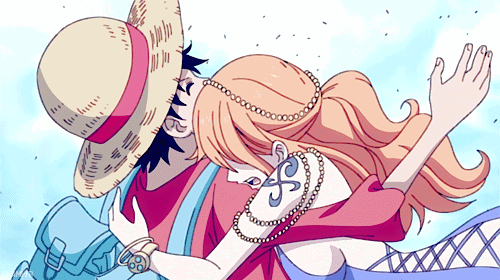
...and NaLu
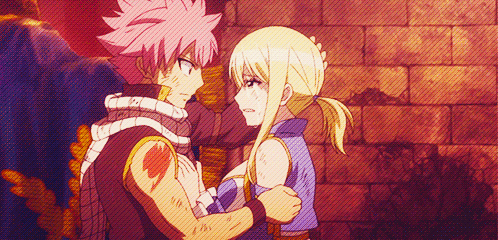
And several post made here are meant to showcase how their respective stories build them up through consistent bonding; defend their position as potent relationships by means of evidence and logic; or both.
We know standing next to each other in the same panel or frame are not “moments” if the context and/or the story doesn’t turn them into a meaningful interaction.
We know a girl slapping a guy is not something inherently romantic, and it’s not a defining trait of a potent relationship, specially when context says otherwise.
We know that brief rescue scenes are not always the sign of a potential romance as there are several elements needed to turn them into actual moments for a pairing
But, there are some arguments that persist because shallow shippers think they give meaning to their premises, disprove the potential another pairing has, or both. This post will deconstruct a couple of those arguments used to argue against LuNa and NaLu's position as potent relationships in their respective stories.
1) Romantic pursuit Vs. Consistent bonding
I was going to call this one the “Touka Argument”, or Touka's Rhetoric. Naming it after FT's Touka...
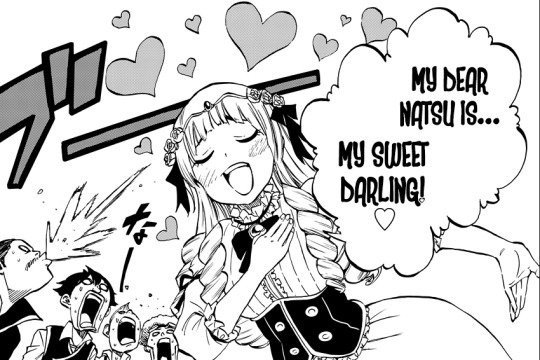
...she seemed to be the embodiment of nearly everything shippers argue against relationships as LuNa and NaLu until we got a comedic plot-twist worthy of a trolling writer.
Still, the argument goes a little bit like this: any one-sided pursuit of romance should become part of the endgame pairing. It doesn't matter if the story doesn't take such "affection" seriously, it doesn't matter if it is meant to be a joke with little to no weight, all that matters is the character actively looking for romance while proclaiming “love.”
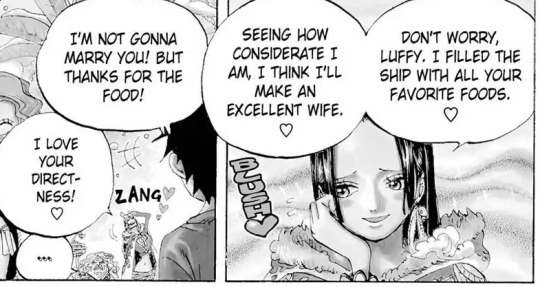
A character who appears much later in the storyline openly expressing "love" for the MC. Meanwhile the MC shares far more development with a romantically inactive girl.
Some shippers may argue that the girls or guys who are actually "in love" are the ones who will win their object of affection. Others may admit this is a extremely subjective matter as some of these girls end up winning, which makes it hard to analyze this stuff properly. But, there's one thing that helps people to keep an objective perspective: development
If we take a look at relationships like Gruvia from Fairy Tail, we get to see that their most powerful scenes are not the ones that involve the characters being all mushy over each other, but the moments of actual emotional significance; actual build-up...
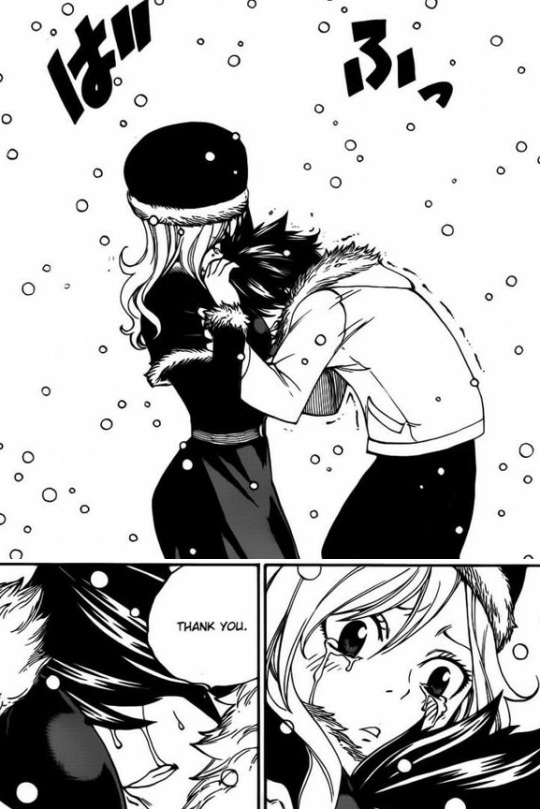
...created by impactful moments
Some of Hiro Mashima's works prove he's aware that what truly matters in this particular regard is not how often a character makes claims of love, but how much development she or he has with a significant other.
What about Eiichiro Oda and his works? We got one notable example from the Whole Cake island arc
One sincere gesture of kindness from Sanji (the local pervert and Casanova wannabe) was enough for him to get to Pudding's heart...
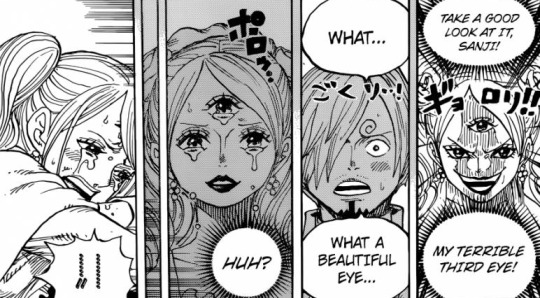
...when he shattered the image she had of herself as monster with that gesture, and later an armor-piercing question, she ended up falling for him as he was the only person on that island that saw her true face and still deemed her as a beautiful woman instead of a monster. Sanji had such impactful moments with Pudding without going "horny" mode on her.
Other authors know that this kind development is needed for the logical progression in both good storytelling and decent characterization. They may not say it out loud, but their works speak for themselves while showing even characters who are not looking for romantic love can eventually develop such bonds.
Take a look at relationships like Kenshi and Kaoru from Rurōni Kenshin...
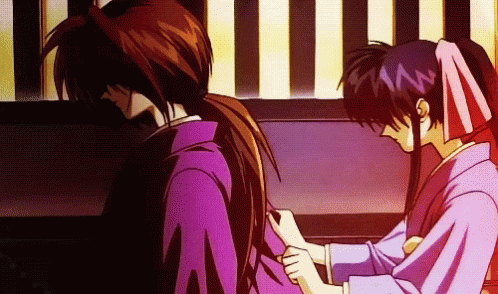
...they became an item, despite neither of them being romantically active, because they bonded over time, supporting and caring for each other, to the point of developing a much deeper connection. No over-the-top corny lines nor becoming all horny on each other; it was just consistent bonding, which ultimately triumphed.
It's shouldn't come as a surprise given the author of Rurōni Kenshin mentored Eiichiro Oda.
And to add it more to the irony, there was another girl interested in Kenshin who got a role much greater in the anime than the manga, and who was more mild-tempered, feminine, and seductive.
Another mangaka who understood this matter is Seishi Kishimoto, brother of Masashi Kishimoto (of Naruto fame), and author of O-parts Hunters.
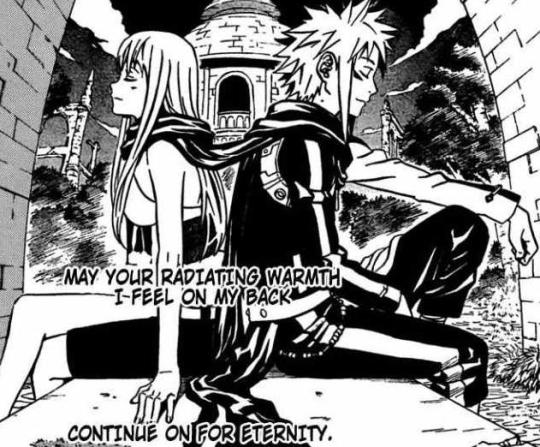
The moments shared by the main characters led Ruby to become Jio's emotional support, and both of them to get emotionally attached to one another. Another girl was interested in Jio, but consistent bonding made Jio and Ruby's connection remain as a potent relationship... as well as some other plot points.
And of course, there's the critically-acclaimed Fullmetal Alchemist (Brotherhood for anime-only watchers) by Hiromu Arakawa.
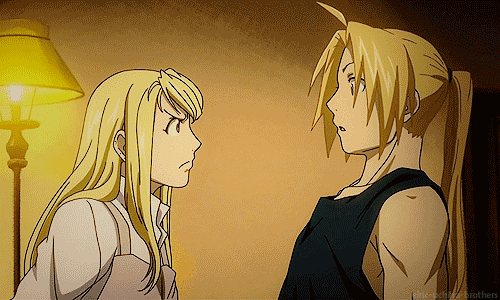
Edward and Winry. Two well-written characters who weren't romantically active before ending up together, yet their relationship and later upgrade made total sense... I could name Roy and Riza too, but that would be overkill.
The point is that it's not the romantic pursuit (or gag-like claims of "love") that makes or breaks a pairing; it's all about the moments that leave an impact along with shared experiences which give a strong companionship the potential for a relationship upgrade.
2) Every shonen story is the same story?
While this argument sounds ridiculous, it serves as an umbrella for several other claims some shippers may use.
A lot of anime fans know that most popular shonen stories, such as Dragon Ball, usually feature underdeveloped relationships. So, more often than not, shippers may claim or imply significant moments and actual development mean little to nothing in a shonen story. This reasoning can be easily mixed with the "romantic pursuit" argument.
Another related argument is the "informed attribute," which means you can off-screen the whole relationship and just let a character or narration "tell" you how a pairing happened instead of "showing" you how they developed. Basically, a violation of "show, don't tell."
While it's true several shonen stories share similar tropes, the more you examine each story, the easier it becomes to tell them apart.
Eiichiro Oda wrote a story that could easily fit the concept of "romance," as in a dramatic narrative treating themes such as heroism, idealism, mystery and adventure...

In fact, according to Sugita, a former One Piece editor, "Oda revealed that One Piece was something of a deliberate subversion of Dragon Ball through having a vastly more complex story and characters, while Dragon Ball is a manga infamous for its simplicity."
This is consistent to Oda's own statement: "I write ONE PIECE as dramatically as I can. If I had written a pure battle manga, it would have been easily defeated by Dragon Ball."
Given the amount of themes the series covered and the engaging emotional narrative, the argument of this story being the same as every other popular shonen doesn't hold up. The characters are all bound together as true companions not by a desire to become "stronger," but because they're "in love with adventure" as the author put it.
What about Fairy Tail? Hiro Mashima wrote a fantasy shonen series centered around thematics that are common in other shonen stories: Companionship and Family.
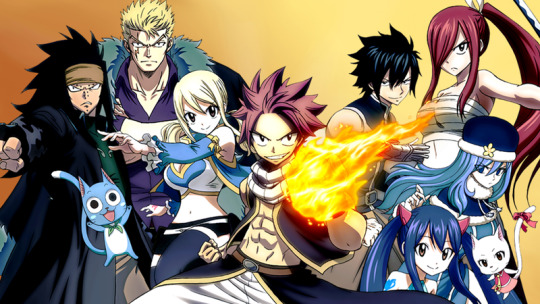
While some people already commented how the manga seems to have strong similarities with One Piece, Hiro Mashima had his own ideas when making the story. As he himself said once: "Usually a shonen manga starts with just a main character, who then slowly accumulates his or her allies as the story progresses. But in the world of Fairy Tail, everybody pretty much knows each other at the beginning. That was sort of what I was going for."
In another interview he even stated one of the thematic differences in relation to his previous work: "Rave Master was about friends saving the whole world, but Fairy Tail is about closer-knit relationships."
This is consistent with what we've seen in Fairy Tail, as the titular guild is all about that theme, how different people of several backgrounds are connected by intimate bonds and the search for exciting adventures.
What about the characters?
Both Eiichiro Oda and Hiro Mashima (just like many other mangakas) grew up watching and/or reading Dragon Ball. But, are their main characters Luffy...
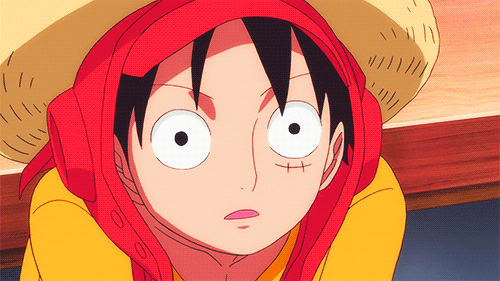
...and Natsu...
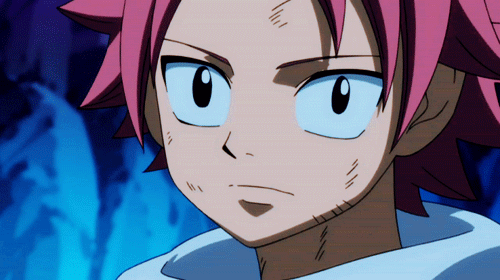
...just mere replicas of Goku and other shonen heroes?
It's true that many authors follow the shonen hero archetype when writing the protagonist of a series. Both Luffy and Natsu are golden-hearted idiot heroes, and both of them have personalities that reflect the idea of "No Challenge equals No Satisfaction."
But, unlike Goku their ultimate aim is not all about following an endless cycle of self-improvement. At their core, both Luffy and Natsu are thrill-seekers who are constantly looking for fun and adventure.
Luffy is all about freedom, and even if he's not the sharpest tool in the shed, he can still display actual leadership qualities when the situation calls for it. Natsu, like some other of his guildmates, is a mischievous trouble-maker but still pretty much the embodiment of the values of Fairy Tail.
The more you examine both characters, the more differences you can find...
All of this is related to shipping mainly because people may claim "every shonen story is the same story" to justify pairings that do not have enough canon material supporting them.
So, if the hero and the heroine have a far more substantial development and actual chemistry, shippers who oppose such characters getting together may imply the following: "if several popular mangakas make their official couples with no regard for moments or build-up, why Oda or Mashima should be any different."
Because each author is different, and even if their stories use similar tropes from time to time, elements like themes, purpose, focus, plot, and characters will vary from writer to writer.
3) Anime Vs. Manga
'It's easier to watch a series than read a story'
Which is why whenever a manga gets an anime adaptation, if the story is good, its popularity rises.
However, sometimes the directors and writers of the anime do not share the same vision as the mangaka. And people who are up to date with both mediums can perceive such differences. Dragged out fights, OOC moments, inconsistencies with plot points from the source material, etc. are common place in some adaptations.
But, some directors and other staff members take some liberties to add "shipping fuel" according to their own views and taste.
I apologize in advance if this comparison offends someone, I’m just using it as an example. The anime adaptation of Bleach made by Studio Pierrot featured some ship tease...
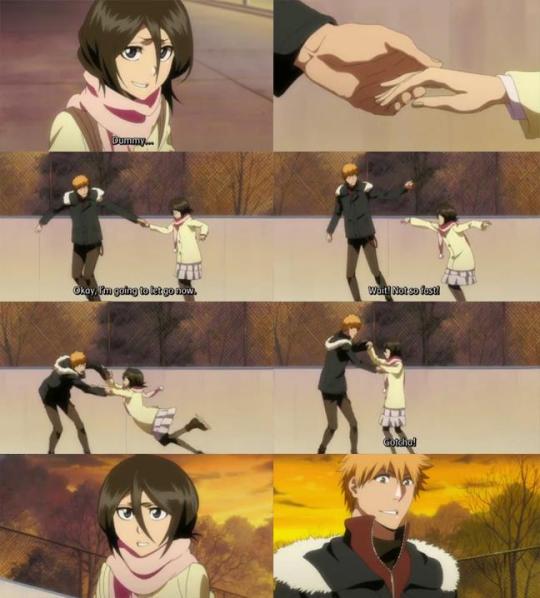
Such scenes weren't written by Tite Kubo, the author of Bleach. And they could easily pass as something "romantic."
However, during an interview, one of Bleach's editors, Toya Taichi, stated that "in Kubo sensei’s mind, Orihime is the heroine character and Rukia is a comrade" and he later summed it up as "feeling like a pal" (相棒 in japanese).
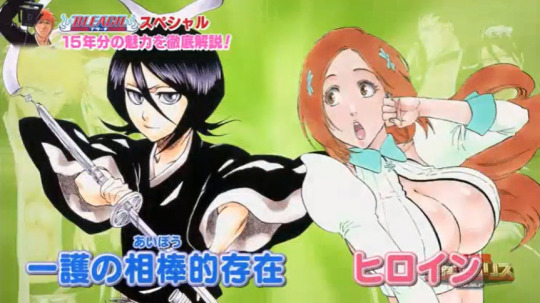
When it comes to modern japanese storytelling, the term "heroine" (ヒロイン in japanese) is interchangeable with "love interest." Orihime herself was even present in the Shonen Jump heroines covers. But, people who take filler scenes as the real deal may think otherwise.
When it comes to Fairy Tail, A-1 Pictures did a decent job in adapting the story but they also added shipping fuel, small things like Gray following Lucy and getting teased by Happy for it, or the big things like the non-canon expansion of the flashbacks involving Lisanna, which some people still treat as the signs of endgame pairings.
People who watched this version before reading the manga are more prone to overhype relationships that have little to no supporting evidence from Mashima's works. Fortunately A-1 Pictures toned it down later, too bad some shippers never forget...
If we talk about One Piece, the story is very different to say the least. TOEI Animation didn't stop in this regard, as some people may recall I already posted several of the changes they made for the sake of ship tease, and unlike A-1 Pictures they keep going and going with the moments they keep adding being more and more blatantly shippy (specially with Nami and Sanji) as time goes on.
Since One Piece is very long-running manga, more and more people only watch the anime and they take all those additions as the real deal despite the heroine of this story sharing far more development and solid chemistry with the hero.
However, not every fan is into well-developed relationships, so not every manga-reader will go LuNa/NaLu. Same could be said about anime-only watchers, as not all of them are swayed by filler, so not all of them will disregard LuNa/NaLu if they like consistent bonding.
The point is that the anime adaptation has a strong influence in how the fans perceive the story, the characters, and the bonds they build. And not every anime adaptation presents a favorable image of the in-canon premises made by the mangaka.
Here’s a little bonus:
Who's the One Piece heroine according to Oda?
When talking about Strong World, the movie he wrote, Oda said “I really wanted to make a ‘hero saves the heroine’ story." A movie about a hero (Luffy) saving the heroine (Nami). He added: "You might think otherwise, but I had no intention of bringing in someone new to fill that [heroine] role. So when I had to think about whom to use for it amongst the straw hats of course that meant Nami.”

He also stated in 2019, when an interviewer addressed the fact his wife is similar to Nami, "They say a mangaka often marries a person who's similar to the heroine."
Across the several years the manga had been going, Nami often appears in the Shonen Jump heroines covers due to her role in One Piece.
You can see the latest Jump heroines poster here
Who's the Fairy Tail heroine according to Mashima?
One of his latest works (HERO’S) answers this question...
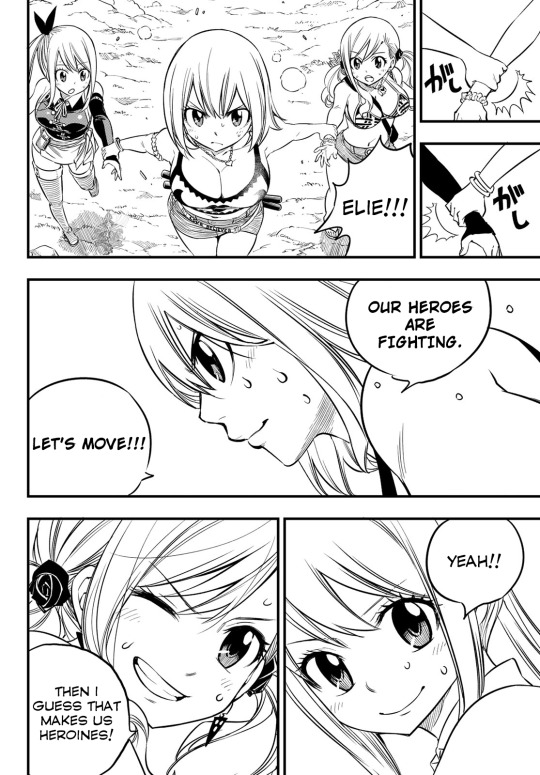
Context: Ellie is talking about Haru, Natsu, and Shiki (the heroes of Rave, Fairy Tail, and Edens Zero). Each one of these girls has the role of "heroine" in each of their respective stories. One of them even ends up with the hero.
BONUS: The Elephant in the room
As you probably noticed, I used a lot of official statements to back up my post. However, even those who oppose LuNa and Nalu use those kind of statments...
In the case of One Piece, several fans considered "romantic love" a concept completely foreign from the series due to a couple of quotes from the author. When asked about this particular subject, Oda stated that the members of Straw Hat crew are "in love with adventure." And later when asked again, the mangaka said that since this is a shonen story "romance isn't depicted."
Based on these answers, several fans created the myth of "romantic love" not existing in One Piece. Many held onto this conclusion with so much intensity that they always dismissed the bad girl Alvida's obvious attraction to the hero (Luffy).
However, as a clever and perceptive reviewer pointed out we're talking about the same author that once claimed he doesn't kill characters and went as far as to say "I hate when supposedly dead characters come back to life." Yet his story has a couple of "supposedly dead" characters who turned out to be alive. No spoilers here.
Some of his statments are meant to be taken with a grain of salt. He said "romance wasn't depicted" but as of recent years it's been a thing in One Piece...

...Señor Pink and Russian are one example of how traditional romance gets integrated in both story and characters. So, using the author's words to invalidate all possibility of romance in One Piece no longer works.
Ironically, haters take Oda's old claims literally when talking about Luffy, but they completely forget about it as soon as someone mentions Nami or Robin in this particular regard. A clear display of a blatant double-standard...
When it comes to Fairy Tail, some haters love to quote that Natsu and Lucy are "more than friends but less than lovers."
Yet, they choose to ignore that in recent years, when asked about the relationship between these characters, Mashima himself replied: "I feel that the Natsu and Lucy ship is more suitable."
Some time before that statement, during a New York Comic Con, when asked what he feels is “right” in this regard Mashima held up his drawing of Natsu and Lucy...
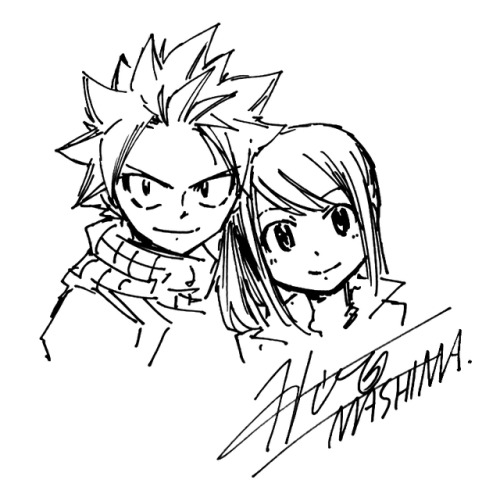
...so everyone could see his answer to the question.
So, using Mashima's old quote to deny the plausibility of a relationship upgrade here and there is not going to work either.
If people want to defend a pairing or prove a potent relationship has what it takes to become canon, they should try to stay true to the author's works, and the story's internal logic, instead of trying to find a way around them and/or promoting a baseless process of elimination, all to justify another premise.
Consistent bonding, chemistry, and natural development coming from the author’s works should be superior to mere rethoric, hype, and/or anime filler
#one piece#fairy tail#eiichiro oda#hiro mashima#monkey d. luffy#nami#luffy x nami#lunami#luna#ルナミ#natsu dragneel#lucy heartfilia#natsu x lucy#nalu#shipping#analysis#I'm ready for the salt...#this feels like committing blog seppuku#edited to correct a couple of mistakes
858 notes
·
View notes
Text
Some Incomplete Ramblings on “Liza / Riza Hawkeye”
One thing I’ve always found fascinating about FMA character / location names is that it’s like a game of telephone from European languages --> Japanese --> (in my case) English. As is such, with telephone, information has the potential to get distorted.
I own lots of FMA guidebooks in English and Japanese, and frequently entertain myself with the name variations. Liore / Leole / Reole / etc. is one of the most entertaining spelling conundrums, official sources constantly varying the name, and never honing in on a consensus over the many years’ passings. But while I could yab on about Martel and Ling and Dolcetto and Kimblee and many other names, I’m here to smile about Riza Hawkeye.
Official sources in English and Japanese almost exclusively spell her name as “Riza Hawkeye.” Over and over, it’s Riza Hawkeye. Compared to many characters, her name’s very consistent. But in some of the earliest materials from the franchise, she’s sometimes labeled as “Liza Hawkeye.” For instance, there’s an early Bandai figure with that name - a figure that would have been developed (and its label created) through Japan.
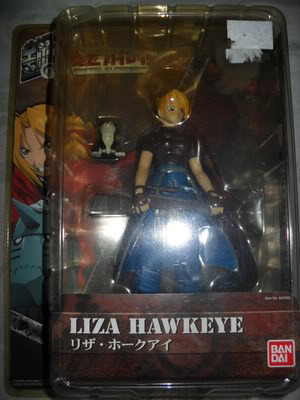
The English version of the Fullmetal Alchemist Trading Card game sometimes calls her Liza, too. Because I’m a linguist who (as my career probably implies) loves Little Language Things... I had to nab a few FMA trading cards with that variant name! I don’t collect cards, but these were irresistible! These cards came in my mail yesterday!!! Tadaaaa!
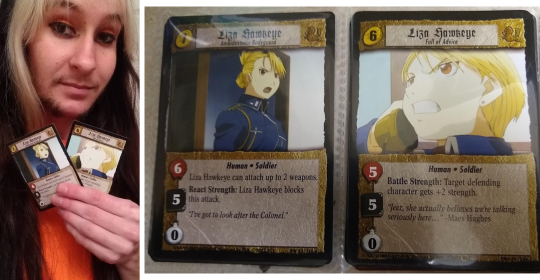
It’s hard to see in the photograph, but these cards are copyright 2005. I’ve tried to find more information on when in 2005 they were printed (no success yet), but the date 2005 is interesting. This isn’t long after the first anime’s English dub began premiering in the USA starting November 2004.
These cards may also have preceded the first official English manga publications. The manga received two official printings in English, one by Viz Media in the USA and one by Chuang Yi in Singapore. Viz Media published Vol. 1′s First Edition in May 2005; Chuang Yi was November 2005. I doubt there’d be any coordination between different companies in different parts of the world creating cards and manga and anime. Different name interpretations were far more likely to happen with FMA being turned into English for the first times. There was no established precedent for how-to-spell-what. As everyone in 2005 was working through their stuff independently or semi-independently, they were giving our girl a different first name.
Now, Riza’s name had been published in the Roman alphabet as “Riza Hawkeye” earlier than when my cards came out. The Japanese company Bandai (that gave us the Liza Hawkeye figure)... also gave us a 2003 card calling her “Riza Hawkeye.” That is, within the same company within a short amount of time, they printed two different spellings of a character’s name. There’s another card set, from 2004, that lists her as “Riza Hawkeye” as well.
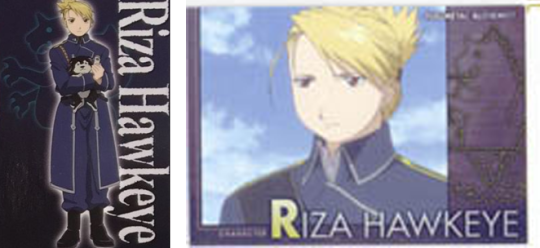
After FMA’s nascent years, Hawkeye’s Roman-spelled name quickly became solidified as “Riza.” Almost all “Liza” materials I’ve seen are 2005 or earlier. The latest material I’ve seen listed as “Liza” is a card with a copyright of 2007.

The English release of the two most important FMA franchise materials - the manga and the anime - would have solidified Hawkeye’s first name as “Riza.” On September 17, 2005, Riza’s full name was stated on screen for the first time in the English airdate... as “First Lieutenant Riza Hawkeye.” This was in Ep. 27 “Teacher.”
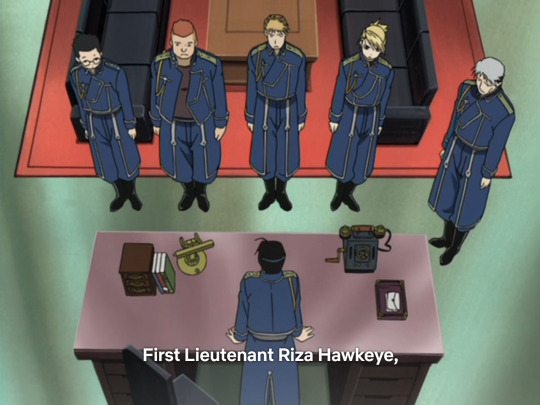
Viz Media worked alongside all this. Viz Media published both the English anime book materials (like Fullmetal Alchemist Anime Profiles, printed in English in 2006) and the manga itself. I believe the first time Riza’s first name was given in the manga was Chapter 24, when Riza introduced herself to Winry. Viz Media printed Vol. 6 (which contains Ch. 24) in February 2006. By this point, for English-speaking fans (especially in the Western Hemisphere), all major FMA materials would have called her “Riza.”
I imagine that by then, that now-iconic name would have been foolish to change. One of the most popular characters was branded firmly as “Riza” by the start of 2006. Couldn’t change that now. Unlike the earliest merchandise, now everything about Riza - both English and Japanese materials - called her Riza. All my Japanese guidebooks that never got English translations call her “Riza.” (And these are guidebooks that continue to have Roman alphabet spelling variations between other characters - even when all published in the same year). None variation left beef for Riza. I want to buy the Perfect Guidebooks, which are older than all the guidebooks I currently own, and see what they say for her name... but for now... everything I’m holding that’s in Japanese is post-2006 and all say “Riza” when they print her name in Roman letters.
I don’t know what Arakawa intended, especially as the earliest Japanese merchandise gives us both Riza and Liza. If the earliest merchandise all said one name, we could have guessed that Arakawa gave the approval. But that’s not the case. The names vary in early Japanese Bandai merch. Nor can we trust major English translated sources as hints of Arakawa’s intentions. It doesn’t seem like they asked Arakawa for explanation on everyone’s intended names. Viz doesn’t provide a good representation on what Arakawa wanted, given as they messed up majorly on other names and are only correcting them NOW, in 2018 and 2019, in their Fullmetal Edition of the manga (in the trade paperbacks, they called Kyle Halling “Khayal,” spelled Kimblee’s name two different ways, wrote “Isvharlan” in Vol. 2, gave the country’s name as “Ishbal” above drawings from the manga that wrote “Ishval,” misinterpreted Xerxes as “Cselkcess,” and lots of other fun oddities...).
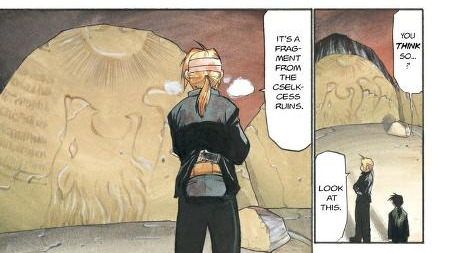
And while some names get written in English in the manga artwork proper, I’ve only seen Hawkeye’s last name.
I know far from everything. There’s still lots I have to check. Don’t take my word as law.
THAT SAID.
From the information I know... I find it fascinating it’s VERY possible Arakawa’s initial inspiration was “Liza Hawkeye.” NOT Riza. There’s in fact good linguistic reason to suppose this.
For people who aren’t familiar with Japanese typography / orthography, the Japanese writing system is composed of kanji and kana. Kanji are characters with semantic complexity to them; the kanji are usually included in a word for meaning-related reasons, but the pronunciation of the kanji can vary depending upon whether the word it contextually represents is a native Japanese word, a Chinese loan word, the first or second kanji in a compound, etc. Kana, unlike kanji, are basically read the same way every time. Instead of being symbols depicting semantic content, kana depict pronunciation content. Kana are written in a syllabary system. A syllabary is like an alphabet except that every symbol represents a syllable you pronounce (or, in Japanese, a mora). Japanese kana are two sets of syllabaries, the hiragana and katakana. Katakana is used to spell recently adopted loan words.
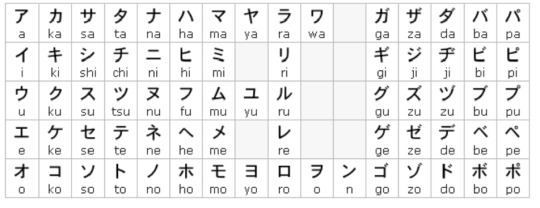
Because FMA characters’ names are (almost) all taken from European names, their names are written in katakana. But because Japanese is a different language than European languages, it has different sounds in it. This means that, when European loan words get imported into Japanese, pronunciation changes happen. The pronunciations allowed in European languages are altered into acceptable sound structures Japanese allows - its phonetics and phonology and phonotactics.
Now, Arakawa doesn’t always spell European words “typically” for katakana. Japanese has over the last few decades adopted many English loanwords. For instance, there’s a loan word for “mustang,” which is 「 ムスタング 」. Roughly, ム = mu, ス = su, タ = ta, ン = n, and グ = gu. So, the Japanese word for “mustang” is musutangu. Arakawa actually gives Colonel Mustang a different spelling than that - he’s masutangu 「 マスタング 」.
Perhaps this was because Arakawa saw the name “Mustang” in Roman letters and did her own import into kana. In the process of her changing “Mustang” from Roman letters to katakana, she might have chosen “ma” instead of “mu”. Perhaps this was because she thought this would make his name sound cooler, look unique, or make her metaphoric name more subtle. Or, perhaps this arose in foresight with the eventual “Madame Christmas” wordplay (“Christmas” in Japanese is 「 クリスマス」kurisumasu, which makes her full name kurisu masutangu - get how that works perfectly?). Whatever the reason(s), we know that Arakawa’s katakana spelling of imported European words isn’t always what Japanese’s loan word katakana spelling officially does.
Riza’s name in the Japanese could be another instance of this.
To explain what I mean, let’s take a look at my graphic:

Each line is a name in Roman letters (acceptable in English) with its corresponding Japanese spelling. In parentheses is a rough pronunciation of how that katakana’s pronounced.
First: There are indications that Riza’s full given name is Elizabeth. Some fans say it’s just her code name, akin to how “Jaqueline” is Havoc’s code name. It’s true we hear Roy call her “Elizabeth” in that code name setting. However, it’s also interesting that he calls her “Elizabeth” when he’s visiting Madame Christmas. In his home environment, where he’s dropping his walls and being far more honest and open to family, where he’s even blabbing about being romantically interested in Hawkeye OUT LOUD, he calls her “Elizabeth.” You could argue that it might be another instance of intentional code naming to protect her identity, but it’s still very interesting that this is a second, different, emotionally open, trusting context in which Roy names her “Elizabeth.”
Linguistically, her name seems derived from “Elizabeth,” too. Again: while spellings and pronunciations are slightly altered when Arakawa imports European names into Japanese, she’s still taking those names from a European source. But I don’t know of a common Western European name that’s essentially Riza. Go to baby names websites. You don’t get a long list of female names that are Riza, especially not in Western Europe, where Arakawa took most names. Where’d she get this?
A shortening of “Elizabeth” is likely.
Look at Line #1 of my graphic. I have the word “Elizabeth” in Roman letters alongside the katakana spelling of “Elizabeth.”
That first line is how “Elizabeth” is usually spelled in Japanese writing. It’s 「エリザベス」. エ = e, リ = ri, ザ = za, ベ = be, and ス = su. So the Japanese version of “Elizabeth” is more or less erizabesu. Note that the same symbol 「リ」is used for both r+i and l+i. This could be a long linguistics explanation in itself, but more or less: Japanese doesn’t have separate “r” and “l” sounds. They have one sound that’s like an “r.” But, it has pronunciation variation based upon dialect, and, within a single dialect, where said “r” is placed in relation to other sounds surrounding it. The “r” can make lots of sounds (allophones), including what English speakers would call an “l.” So when imported words from European languages which have separate r and l sounds (phonemes), these r’s and l’s get reduced in Japanese into one thing, interpreted as that single “r” sound their language has.
Now, let’s go to Line #2. A common nickname for “Elizabeth” is “Liza.” Notice the spelling. Elizabeth contains the actual, unaltered spelling of Liza. However, pronunciation changes occur. The “i” in “Elizabeth” is a different sound than the “i” in “Liza.” The spelling’s the same between full name and nickname; the first vowel just sounds different.
The Japanese katakana spelling of “Liza” is based upon the pronunciation. NOT the spelling! See my visual. The way “Liza” is spelled in Japanese is 「ライザ」- that is, raiza. ラ = ra, イ = i, and ザ = za. As a result, the name “Elizabeth” in katakana does not contain the unaltered spelling of “Liza” inside it.
Note, however, that the name **RIZA** is DIRECTLY spelled inside the Japanese spelling of “Elizabeth.” 「エリザベス」 contains 「リザ」. That is, erizabesu can be truncated to riza without any spelling changes!
That’s what we see in Line #3. Note that, in red, I have highlighted where the spellings stay the same within full name and nickname.
Ergo, “Riza” is directly derived from “Elizabeth” in the katakana spelling of “Elizabeth.” That’s indirect indication that, when Arakawa was giving Riza her name, she was looking at “Elizabeth.”
In which case, “Liza” WOULD be a correct reading for Hawkeye’s first name.
Similar to the Chris Mustang thing I mentioned, making a spelling change for an “Elizabeth” nickname makes sense in Japanese. Japanese readers might not be familiar that “Liza” is a nickname for “Elizabeth.” The fact that raiza for “Liza” is spelled very different in Japanese kana compared to erizabesu for “Elizabeth” ...would make it hard to connect the dots between the two names. But giving the spelling riza makes the connection easier-to-see: for them, in katakana, they can see riza spelled inside erizabesu. Just like, in English, we can see “Liza” directly inside “Elizabeth.”
So, from what I know, I postulate that Arakawa initially envisioned “Liza Hawkeye.” It all makes linguistic sense, and the fact that early FMA merchandise from Japan sometimes uses “Liza” only helps my case. That they sometimes also called her “Riza” is a common phenomenon of Japanese publications not knowing when to make something an R and when to make something an L. I mean, in the Death Note anime, you see someone’s name listed as “Rally” instead of “Larry.” The L/R confusion is common and appears commonly in officially released Japanese materials.
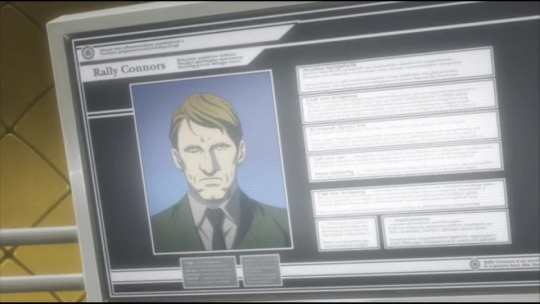
I mentioned at the start of this ramble that translating names multiple times is like a game of telephone. Thus far, it seems like we went from Liza --> リザ. Then, when North American native English speakers got the Japanese 「リザ」, they had to figure out what to do with it. Because the character’s name was spelled 「リザ」 - NOT the standard「ライザ」 Japanese use to spell “Liza” - then translators wouldn’t have thought this was an intended “Elizabeth” nickname. It doesn’t help that Roy doesn’t call Riza “Elizabeth” as code until several volumes after we’re given riza (Ch. 37 Vol. 9, I believe). So, translators were left with a really oddly spelled, indeterminate name... something that could have been spelled “Leeza” or “Reeza” or “Riza” or “Leaza” or who-knows-what. But “Liza” would have, to them, seemed like a phonetically poor choice - English readers would see “Liza” and pronounce it very differently from how the Japanese would pronounce 「リザ」. If Arakawa had intended “Liza,” she would have spelled it markedly differently, right? So “Liza” would have been an unintuitive translation option for Japanese --> English translators. On the other hand, English readers would see “Riza” and pronounce it close to how the character’s name was spelled in Japanese. So even though “Riza” isn’t a normal Western European name, that’s what seemed to make sense. Ergo, “Riza” became the “intuitive” choice for translators, and that’s what they put.
It’s not unfeasible that this “Riza” choice was made independently with several groups of people - the manga translators and the English dub script workers, namely. “Riza” seems the most default “sensible” choice. And once both Viz Media and Funimation Entertainment gave English consumers, consistently, “Riza” - well that was that! It probably influenced Japanese publishers with their next materials. It would have influenced all other English products. Thus, henceforth, Japanese or English origin, we’d only see her name as “Riza”.
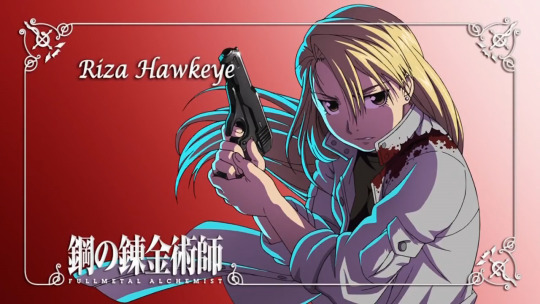
Don’t take this as a flawless or conclusive analysis. Opening the Perfect Guidebooks, after I buy them, might tweak or solidify some of my thoughts. There’s many materials, other merchandise, I haven’t seen the packaging to, or seen inside of, or know what year it was made. I might not have accurately remembered / researched the first instances in which names were given across the animes, manga, etc. I don’t know hoards about the Trading Card game. I’m not fluent in Japanese, just a beginner. I’m a linguist but academically I spent little time with Japanese in my studies and research. I definitely can’t mind read Arakawa. Other fans may know more(?). This is meant as a happy ramble of thoughts, not a conclusion. And I wrote this overnight instead of getting sleep. Because this is a wise use of time, right?
I will always call her “Riza.” The name fits her. It’s a unique name. It’s a cool name. I think it sounds better than “Liza Hawkeye.” I grew up with “Riza.” I’m attached to Riza.
But I find it so fascinating to acknowledge and study the background of when she was labeled “Liza.”
I’m quite happy to be hold cards from 2005 - in my hand - that label her such.
#long post#non-dragons#Riza Hawkeye#FMA#Fullmetal Alchemist#Fullmetal Alchemist Brotherhood#Fullmetal Alchemist: Brotherhood#FMA 2003#Fullmetal Alchemist 2003#analysis#my analysis#linguistics#close enough#I've thought about this for a while and chatted in private with irl or url friends on this#first time I'm posting some of my name variation thoughts online#I seriously#have thought#LOTS#about the name variations and telephone game in FMA#looooooooots#I love it so much it's just INTERESTING#UPDATE: I fixed a major typo#whooooops#watch the old version circulate more though hahaha that's always how it works XD
670 notes
·
View notes